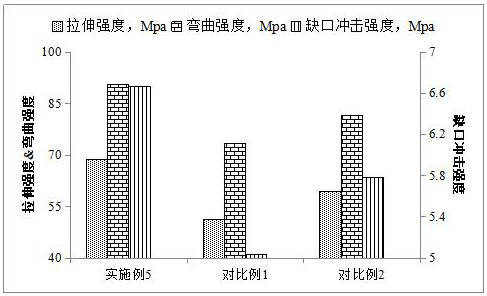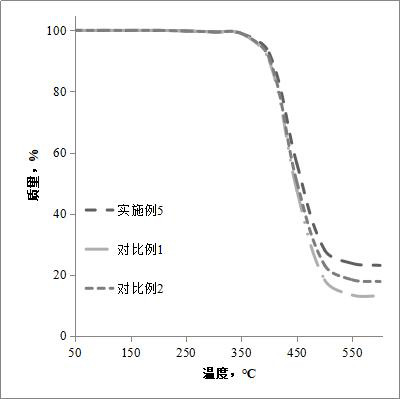A solar multi-layer composite photovoltaic backplane
A multi-layer composite and photovoltaic backsheet technology, which is applied in the direction of photovoltaic power generation, layered products, and synthetic resin layered products, can solve the problems of reduced effective output power of batteries, fires caused by component combustion, and battery module shedding, etc., to achieve Promotes crystal growth efficiency, enhances strength against mechanical damage, and enhances waterproof performance
- Summary
- Abstract
- Description
- Claims
- Application Information
AI Technical Summary
Problems solved by technology
Method used
Image
Examples
Embodiment 1
[0027] A solar multi-layer composite photovoltaic back sheet, comprising: a polyvinyl fluoride protective layer with a thickness of 10 μm and a polyethylene terephthalate intermediate layer with a thickness of 0.2 mm; a polyethylene terephthalate intermediate layer A polyvinyl fluoride protective layer is applied on both sides respectively, and the polyvinyl fluoride protective layer and the polyethylene terephthalate intermediate layer are adhered by a polyurethane adhesive.
[0028] Above-mentioned polyethylene terephthalate intermediate layer adopts following concrete steps to make: 50kg polyethylene terephthalate is placed in 70 ℃ of drying ovens to dry and remove moisture, and 1kg hyperbranched pentaerythritol composite polycondensate is added. Melt and blend in a torque rheometer preheated to 120° C., the rotor speed is 60 r / min, extrude, dry, and injection-mold to obtain a polyethylene terephthalate intermediate layer.
[0029] The above-mentioned hyperbranched pentaery...
Embodiment 2
[0031] A solar multi-layer composite photovoltaic back sheet, comprising: a polyvinyl fluoride protective layer with a thickness of 100 μm and a polyethylene terephthalate intermediate layer with a thickness of 0.5 mm; a polyethylene terephthalate intermediate layer A polyvinyl fluoride protective layer is applied on both sides respectively, and the polyvinyl fluoride protective layer and the polyethylene terephthalate intermediate layer are adhered by a polyurethane adhesive.
[0032] Above-mentioned polyethylene terephthalate intermediate layer adopts following concrete steps to make: 100kg polyethylene terephthalate is placed in 80 ℃ of drying ovens to dry and remove moisture, and 5kg hyperbranched pentaerythritol composite polycondensate is added. Melt and blend in a torque rheometer preheated to 140° C., the rotor speed is 100 r / min, extrude, dry, and injection-mold to obtain a polyethylene terephthalate intermediate layer.
[0033] The above-mentioned hyperbranched penta...
Embodiment 3
[0035] A solar multi-layer composite photovoltaic back sheet, comprising: a polyvinyl fluoride protective layer with a thickness of 30 μm and a polyethylene terephthalate intermediate layer with a thickness of 0.4 mm; a polyethylene terephthalate intermediate layer Polyvinyl fluoride protective layers are respectively applied on both sides, and the polyvinyl fluoride protective layer and the polyethylene terephthalate intermediate layer are adhered by epoxy resin adhesive.
[0036] Above-mentioned polyethylene terephthalate intermediate layer adopts following concrete steps to make: 60kg polyethylene terephthalate is placed in 77 ℃ of drying ovens to dry and remove moisture, and 2kg hyperbranched pentaerythritol composite polycondensate is added. Melt and blend in a torque rheometer preheated to 135° C., the rotor speed is 70 r / min, extrude, dry, and injection-mold to obtain a polyethylene terephthalate intermediate layer.
[0037]The above-mentioned hyperbranched pentaerythri...
PUM
| Property | Measurement | Unit |
|---|---|---|
| thickness | aaaaa | aaaaa |
| thickness | aaaaa | aaaaa |
| thickness | aaaaa | aaaaa |
Abstract
Description
Claims
Application Information
 Login to View More
Login to View More - R&D
- Intellectual Property
- Life Sciences
- Materials
- Tech Scout
- Unparalleled Data Quality
- Higher Quality Content
- 60% Fewer Hallucinations
Browse by: Latest US Patents, China's latest patents, Technical Efficacy Thesaurus, Application Domain, Technology Topic, Popular Technical Reports.
© 2025 PatSnap. All rights reserved.Legal|Privacy policy|Modern Slavery Act Transparency Statement|Sitemap|About US| Contact US: help@patsnap.com



